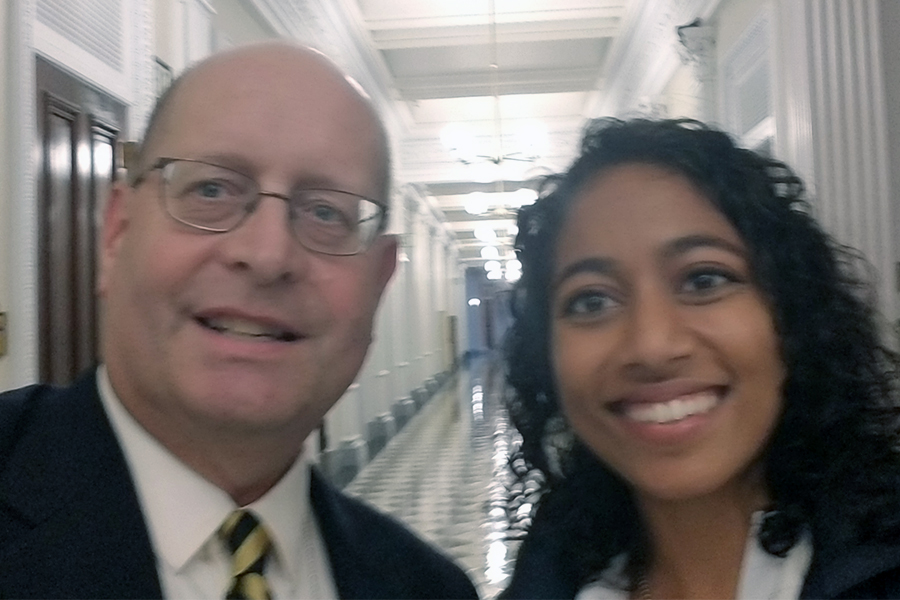Collicott contributes to National Space Council roundtable session

AAE Professor Steven Collicott contributed to a National Space Council roundtable session focused on microgravity research and development Monday at the Eisenhower Executive Office Building in Washington D.C.
Collicott was among about 30 representatives from among the microgravity research community that included individuals from public and private sectors, academia, and non-governmental organizations.
The group discussed a strategy for the nation’s investment in microgravity research and development, including looking ahead to when International Space Station’s operational life ends and what the nation should be planning in order to have good science capabilities and technology development capabilities in space in weightlessness. They dove into questions such as what type of microgravity capabilities should we have? How do we get there? What’s the best way for the government to pursue this? Some of the session was related to science and some was related to commercial development, in terms of the purpose of microgravity use.
Collicott says he was thankful for the invitation and enjoyed the opportunity.
“It’s important to me because I feel like I have enough experience, years behind me, where I can hopefully provide some wisdom to the community, to the nation, so as to help advance our nation’s space program,” he says. “As somebody who watched the space race on a black and white TV as a kid, it’s very exciting to be involved in the space program. Not just doing things here but looking at what can we do to assure that the future is strong with the U.S. space program. That’s a very, very exciting thing to me. What’s in it for me? Things like more networking, more contacts, and this type of service can also lead to more job opportunities for our graduates. It just snowballs.”
Collicott, who testified before the U.S. Senate subcommittee on Science and Space about suborbital microgravity in 2013, has extensive zero-gravity research experience in drop towers, parabolic flight, suborbital rockets, and in the International Space Station and has led experiments in microgravity, primarily related to fluid dynamics.
For the last nine years, he has been active in advocacy for the new commercial reusable suborbital rocket industry for research and educational uses of the new vehicles because they are much more cost efficient than the traditional single-use, throw-away sounding rockets. Collicott and his students created Purdue Student Launchboxes that allow grade schools to send payloads into space. A group of second-graders from Cumberland Elementary School in West Lafayette flew a “zero-gravity glow experiment” aboard a Blue Origin rocket last year.

“Grade schools can afford spaceflight now. It’s so revolutionary,” Collicott says. “Nine or 10 years ago I saw this industry was becoming very real and saw I want to be involved in this. So I kind of stuck my neck out here and there, pushing people to take a look at this new capability, both from the science end and then in D.C. pushing people at NASA Headquarters and Congressional staff to really take a look at this. The industry has now started operating regular flights and this creates so many new research opportunities for everyone.”
AAE alumna Sirisha Bandla (BSAAE ’11) also participated in the roundtable discussion. Bandla, who led Collicott’s zero-gravity flight experiment team in 2011, is the business development and government affairs manager at Virgin Orbit and Virgin Galactic.
“It was a great pleasure to serve our nation's space program in the meeting alongside Sirisha,” Collicott says. “She was the youngest participant at the workshop, which documents her rapid rise in the New Space industry.”
